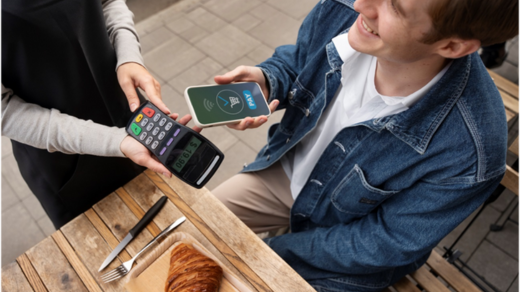- Understanding the Shift in Mobile Micropayment Security
The digital payments landscape is evolving rapidly, and with it comes an ever-growing need for security. Particularly in the realm of micropayments—transactions typically under $50—the balance between user convenience and fraud prevention becomes delicate. As services like ZeroPayBank eye global expansion, embracing robust security without compromising usability is no longer a bonus; it’s a baseline expectation.
At the heart of this transformation lies multi-factor authentication (MFA)—a security protocol that requires users to verify their identity using two or more independent credentials: something they know (password), something they have (device), and something they are (biometric data).
- What Is Multi-Factor Authentication (MFA)?
MFA is more than just an extra password. It’s a layered security system designed to block unauthorized access even if one credential is compromised.
- Something you know: PIN, password, or a security question.
- Something you have: smartphone, USB security key, or OTP token.
- Something you are: fingerprint, face scan, voice recognition.
By combining these elements, MFA drastically reduces the chances of identity theft, account takeovers, or payment fraud.
- Why It Matters for Micropayments
Micropayments might seem too small to bother with security, but they’re frequent and volume-heavy—making them ripe targets for cyber attackers. A single breach can involve thousands of micro-transactions being siphoned silently over time.
소액결제 platforms that ignore authentication vulnerabilities may find themselves exposed to fraudulent chargebacks, user churn, and regulatory backlash.
- ZeroPayBank’s Opportunity: Redesigning Trust Through MFA
ZeroPayBank, with its reputation as a fast and user-focused micropayment platform, is uniquely positioned to lead the next wave of mobile payment security by embedding multi-factor protocols at key access points:
| Authentication Point | Recommended Method | User Impact |
| App login | Biometric + OTP | High trust, low friction |
| Transaction confirmation | Device-bound OTP | Quick verification |
| Account recovery | Security question + biometric | Reduced fraud |
| New device registration | Email confirmation + fingerprint | High security |
This layered approach not only secures user accounts but also builds long-term loyalty by demonstrating commitment to user safety.
- Step-by-Step Guide: Deploying MFA in Micropayment Systems
- User Device Binding: Require users to register devices before making payments. This limits access to trusted hardware.
- Session Expiry Enforcement: Use short-lived session tokens that auto-expire after inactivity.
- Biometric First, Password Last: Encourage biometric logins as the default, keeping passwords as backup.
- Real-Time Threat Monitoring: Combine MFA with anomaly detection tools to spot unusual behaviors (e.g., payments from new geolocations).
- Fallback Gracefully: Offer secure recovery options like identity verification through encrypted channels.
- Pros and Cons of Using MFA for Micropayments
| Pros | Cons |
| Significant fraud reduction | Slight delay in transaction speed |
| Enhanced user trust | Increased setup complexity |
| Better compliance with regulations | Some user resistance to change |
| Scalable for global use | Requires ongoing maintenance |
- Smart Security Strategies to Future-Proof ZeroPayBank
- Tokenized Micropayment Architecture: Replace sensitive data with unique tokens in each transaction.
- Biometric Trust Score Integration: Assign dynamic risk scores based on behavior and biometric accuracy.
- Decentralized Key Storage: Avoid single points of failure by distributing cryptographic key management.
- In-App Adaptive Security Prompts: Trigger extra authentication only when risk rises—e.g., new IP, unusual time, large volume.
- Privacy-First UX: Show transparency about where and how user data is stored, building confidence through design.
- FAQs About MFA in Micropayment Systems
Q1: Isn’t MFA overkill for small transactions?
A1: Not when fraud occurs at scale. Even $1 transactions, if repeated across thousands of accounts, can cause huge losses.
Q2: Will MFA slow down the user experience?
A2: Properly designed, it won’t. Face ID, fingerprint sensors, and push notifications now make MFA nearly seamless.
Q3: Is ZeroPayBank planning to roll this out globally?
A3: While not officially confirmed, ZeroPayBank’s infrastructure is already being positioned for multi-regional expansion.
- Challenges and How to Overcome Them
- User Drop-off During Setup: Provide clear onboarding with skip-and-return options.
- Device Compatibility: Ensure fallback methods exist for older phones.
- Privacy Concerns: Let users opt out of certain data-sharing elements without locking them out entirely.
- Final Thoughts: Future-Proofing Micropayment Trust
In a world where trust equals traction, 휴대폰 소액결제 현금화 ZeroPayBank’s embrace of multi-factor authentication isn’t just a defensive move—it’s an offensive strategy to redefine what secure, seamless, and scalable micropayments should look like in 2025 and beyond.
Security innovation, when done right, doesn’t slow down progress. It fuels it.

